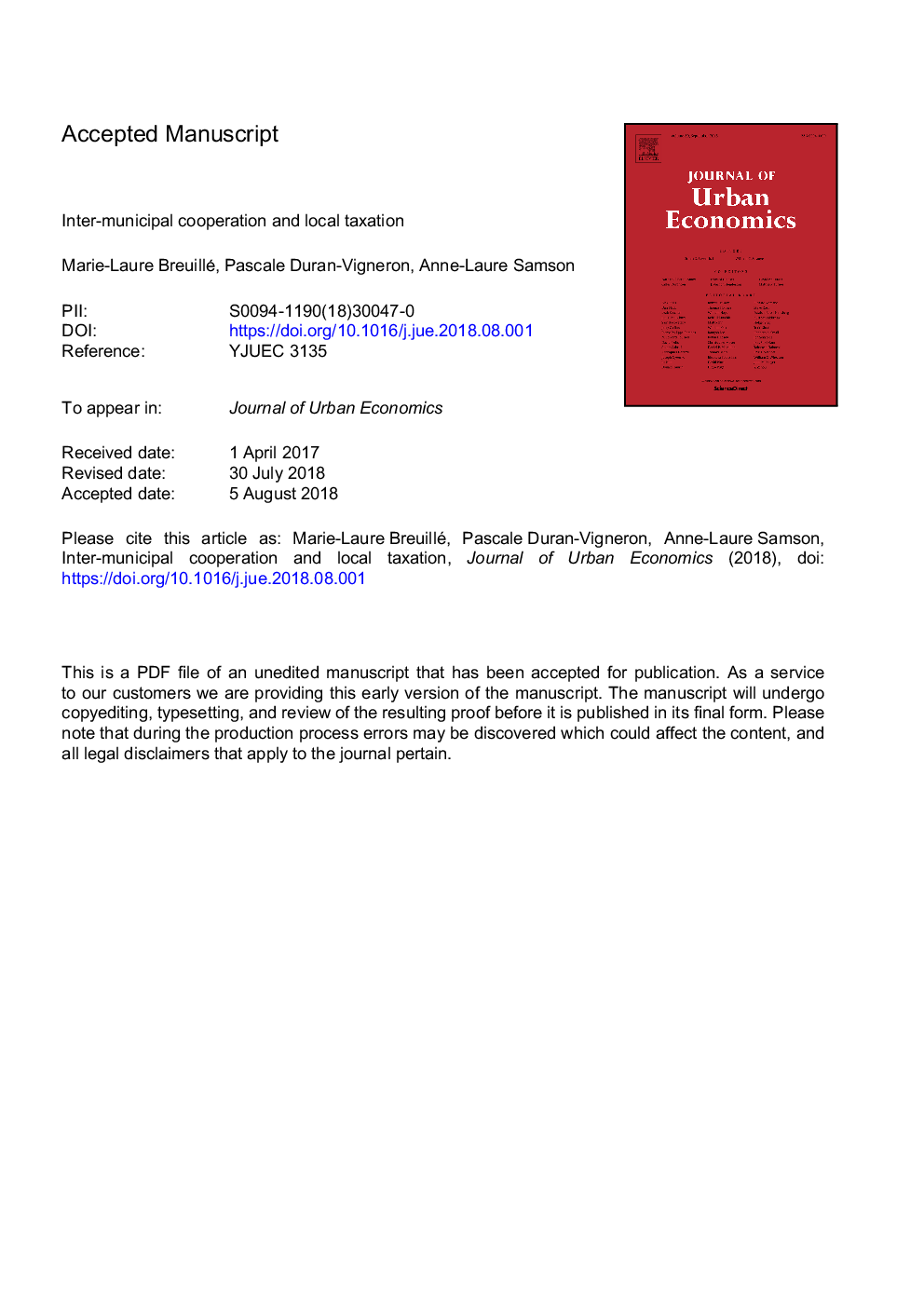| Article ID | Journal | Published Year | Pages | File Type |
|---|---|---|---|---|
| 10127765 | Journal of Urban Economics | 2018 | 38 Pages |
Abstract
This paper studies how inter-municipal cooperation, through the creation of a new jurisdictional tier with transferred competencies and tax powers, affects the four main direct local tax rates (business tax, residence tax, property tax on developed land, property tax on undeveloped land) in France. We use an instrumented difference-in-differences method with an original, exhaustive panel of 36,530 French municipalities over the 1994-2010 period. Our estimation results show that inter-municipal cooperation led to an increase in the four (municipal plus inter-municipal) tax rates, which accounts for 35% of the increase observed by the taxpayer on average. Tax increases are greater for the four tax rates when a tax regime consisting in sharing tax-bases between municipal and inter-municipal governments has been adopted. As for municipal tax rates alone, the smaller the municipality, the sharper their decrease. Finally, the heterogeneity of the youth share of the population between municipalities is a key driver of the extent to which the impact of inter-municipal cooperation differs across municipalities.
Related Topics
Social Sciences and Humanities
Economics, Econometrics and Finance
Economics and Econometrics
Authors
Marie-Laure Breuillé, Pascale Duran-Vigneron, Anne-Laure Samson,
